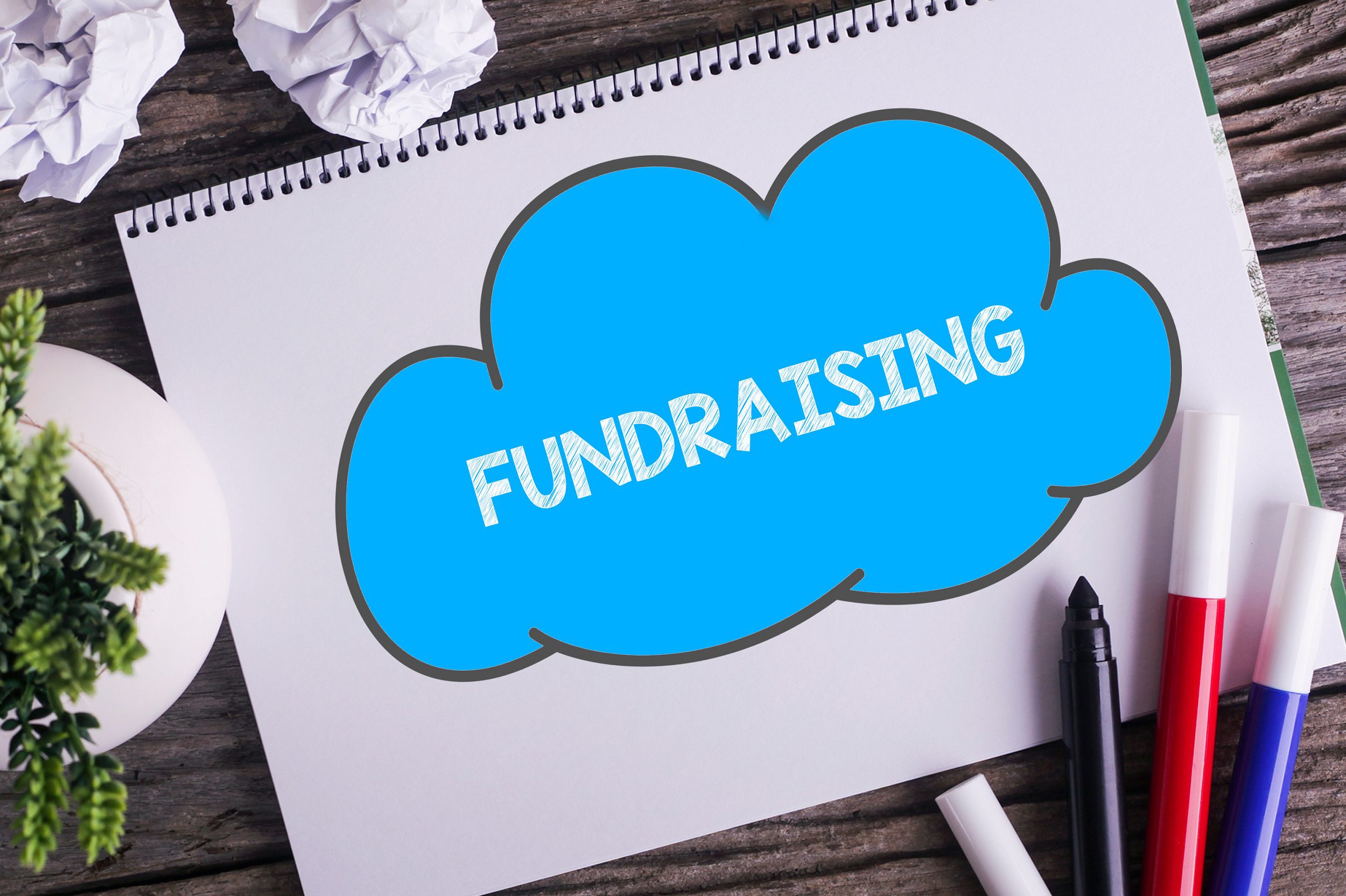Fundraising for Non-Profits Complete Guide
By Paul Bobnak | March 15, 2022

What is Non-Profit Fundraising?
Non-profit fundraising is the process of asking for financial support from individuals, businesses, and foundations for charitable and non-profit organizations.
Background
Direct mail remains the dominant fundraising outreach channel for many organizations of all types and sizes. Even as online channels continue to grow, mail is one of the best ways to acquire, upgrade and retain donors and members.
Want some proof?
In 2021, charitable giving grew by 9% over 2020 according to data in the most recent Blackbaud Institute Charitable Giving Report. However, only 11.9% of fundraising for non-profits came from online donations, a slight decrease from the year before. This means that overall, about 88% of giving comes from offline sources – like mail.
3 Reasons Why Direct Mail Works for Non-profits
Digital channels may get a lot of attention, but direct mail fundraising is still the most effective way for non-profits to build support from the general public.
Here are three reasons why mail is so powerful:
Giving Audiences
Direct mail donors tend to be older and in prime giving years – primarily Baby Boomers and the Silent Generation, and Generation X. They’ve known mail as the giving channel for decades.
At the same time, millennials and Generation Z are known to be big fans of print, including direct mail. When done cleverly or with an appeal to their mindsets, the right mail piece can motivate a donation.
Haptics
Research shows that the touch and feel of paper gives donors a deeper understanding of, and engagement with, printed materials. A Temple University study found that paper ads engaged viewers longer than digital ads did. When reviewed a week later, test subjects showed a greater emotional response and memory for physical ads. Print appeals are more likely to stand out compared to clutter in digital channels.
Emotions
To drive action, tap the emotional pain or pleasure points of your target audience. Create and sustain an emotional connection using headlines, subheads, stories, and images. To be most effective, start with the outer and build using components of your direct mail piece.
How Non-Profits Use Mail
Direct mail serves any one of several organizational goals in fundraising for non-profits.
Acquisition
The most common purpose of fundraising for non-profits is to bring in new members and donors. In many cases, an acquisition direct mail package includes stickers, address labels, or other items to incentivize a prospect to join the organization or donate money.
Renewals/Upgrades
It costs far more to acquire a new donor than retain an existing one. Yet, typical non-profit donor renewal rates run around 40-45%, perhaps because more renewal or upgrade efforts don’t rely on the premiums used in the initial direct mail appeal.
Special Appeals
These campaigns are most often mailed to high-response or higher-dollar contributors, typically in response to a sudden organizational need or an external event.
7 Profitable Fundraising Strategies
A non-profit direct mail strategy should play to the strengths and possibilities of this channel. Direct mail may look like just ink on paper, but what you do with that ink and paper can make or break your campaign.
1. Maximize Your Data
A direct mail program built on a solid data foundation is a must-have in any non-profit fundraising plan.
Most non-profits have to be super careful when spending money when prospecting for donors or communicating with current ones. Whartever channel you invest in – online, offline, or ideally, a combination of both – you need to have the best data possible at the core of your efforts.
Here’s what you should do:
- Make certain that your data is current, complete, and error-free with hygiene practices and a CRM system that helps you create profiles of your members and contributors
- Use segmentation to find your audience as well as focus on specific groups to tailor your messaging across channels (including mail) and improve the donor experience
- Treat each donor as an individual based on what you know about them – their demographics, giving history, and more
- Variable Data Printing (VDP) helps your mail piece improve both the response rate and donation amounts by using customized copy and images
2. Target Specific Audiences
Your non-profit may have a broad mission with wide appeal, but that doesn’t mean you should send mass mailings either.
Your direct mail fundraising campaign should only be going to specific groups who have something in common. They’re more likely to give based on how you write and structure your direct mail piece.
Examples of segments that can be targeted:
- Geographic – if your non-profit provides services within a specific region
- Demographic – if you want to make appeals based on gender, age group, etc.
- Behavioral – if you know who your best donors are by amount given or years as a contributor
- Psychographic – if you have enough data to break down or match potential supporters by shared values and interests
3. Tell a Better Story
Your direct mail fundraising campaign is a conversation between you and the donor. And like many conversations, it is about telling stories (and listening to them). Although the recipient has probably never met the sender before, they can develop an emotional connection if they are made to care about a challenge, choice, triumph, or achievement. It’s about creating a feeling – maybe with some facts to provide support – that prompts action.
With a story, you can help answer 2 main questions the recipient is asking:
- “Why should I care about this?”
- “What can I do about it?”
That second question is crucial. As much as you want to talk about the greatness of your non-profit, let your website do that job. Instead, make your direct mail package should make clear that the donor – not you – is the hero who can save the day.
4. Build Your Brand
When you add mail to your marketing mix, it helps to create a unified brand experience for prospective donors and supporters. Putting the same message, logos, colors, and other elements on all of your channels builds your credibility with your audience. That consistency makes them feel safer in joining or giving to your organization.
Direct mail, because it is a print medium, gives you an opportunity to stand apart from other non-profits. A flyer, calendar, or other premium item included in your direct mail lets you show a side of your organization or mission in a way that a website can’t (see below) but should always be consistent.
5. Engage with Premiums
A front-end premium – whether you mail it to acquisition or to house files – should do more than provide a “reward” to your donor. It should have context and relevance.
Your premium should be connected somehow to your organization’s work and messaging. For example, a children’s hospital could mail out a calendar featuring artwork created by the audience they serve. This item, along with appropriate messaging, would remind the donor of the organization and how the recipient’s gift helps carry out its mission. In addition, that messaging appeal would be reflected in the letter’s storytelling (see above) and drive home the need to make a donation, etc.
6. Engage Across Channels
Modern fundraising for non-profits means multichannel, not just direct mail, email, or the web by themselves. The more channels that donors are exposed to, the more likely they are to trust your message, and then, to donate.
Some tactics to roll out:
- QR codes – Get supporters to your website or landing page in seconds with a quick scan of a QR code on your donation form or letter
- Email – Maximize the individual and combined strengths of email and direct mail to reach expired members, upgrade current donors, or retarget website visitors
- Social – Direct contributors or members to your social media channels to foster community – which builds loyalty and results in more money raised
7. Focus on Retention
It’s obviously crucial to have new donors and members join your non-profit. But because it costs more to acquire them, it should follow that keeping the ones you have deserves more attention than many non-profits actually give it.
According to a 2021 report by the Fundraising Effectiveness Project, the retention rate among new donors in the first half of 2021 was up by 3.5 percent, while the rate among repeat donors was down by 7.2 percent.
Also, the 2021 Blackbaud Institute Charitable Giving Report says that the age of the average donor in the United States has increased from 62 to 65 since 2016.
While the reliability of one generational audience is laudable, charities need to look now at how they can keep donors and members in the fold.
As part of a commitment to prioritize – and improve – your retention fundraising, your direct mail should:
- Thank donors for every gift, regardless of channel
- Help your brand and its mission or messaging stand out
- Provide information on the impact of their contribution, such as with a print newsletter
- Communicate regularly about the needs of your beneficiaries
Depending on donor preferences, you may want to use email for renewals or other donor communications that provide a day-to-day view of activities. There’s also an opportunity to rightsize some of your campaigns – such as special appeals or high-end segments – with an elaborate direct mail piece that provides a stellar ROI.
Wrapping it up
With the help of mailing.com, you can create direct mail for non-profits that effectively builds organizations as well as serves the wants and needs of donors and members. Just remember that effective fundraising for non-profits is about meeting the wants of your audience. People give to other people because they’re responding to you as a person, not as an organization.
We have years of experience working with many non-profits, such as Feed the Children and Union Rescue Mission. Our experts help bring their direct mail campaigns to life, from design and data management to printing and mailing. Reach out to our team to talk about how we can work together on your fundraising campaign!


